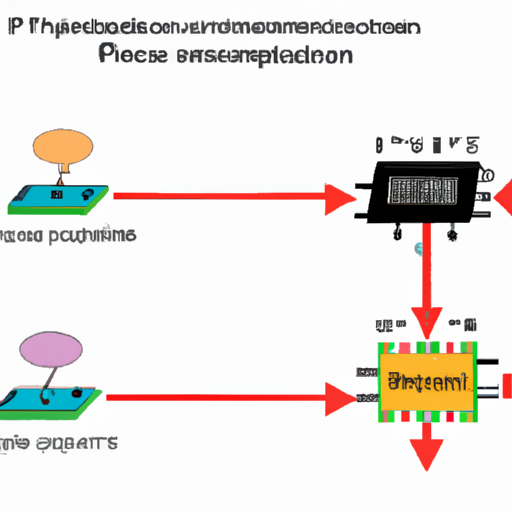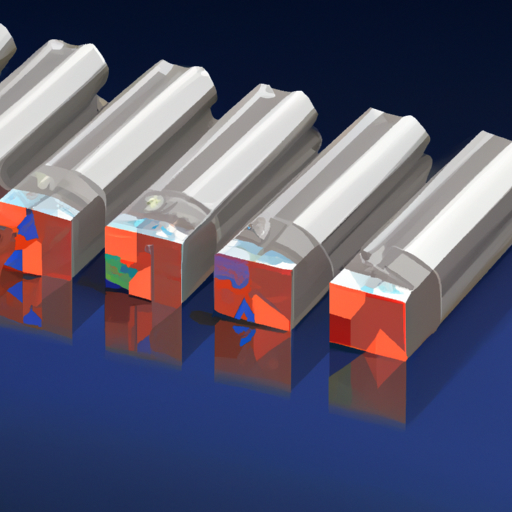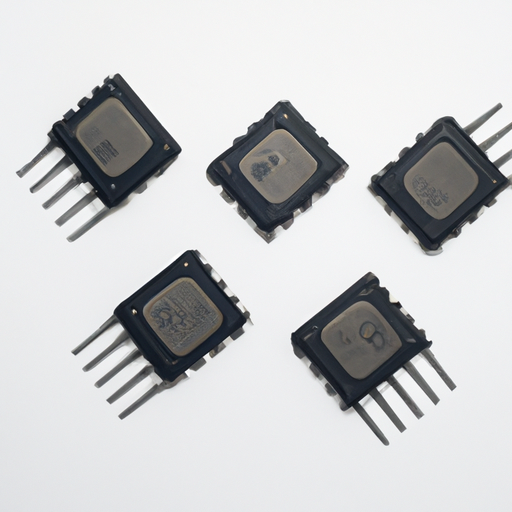What is the Working Principle of Glass Glaze Resistors?
I. Introduction
A. Definition of Glass Glaze Resistors
Glass glaze resistors are a type of passive electronic component that provides resistance in electrical circuits. They are characterized by their unique construction, which involves a glass glaze coating that encapsulates a conductive material. This design not only enhances their electrical properties but also provides significant protection against environmental factors.
B. Importance of Resistors in Electronic Circuits
Resistors play a crucial role in electronic circuits by controlling the flow of electric current. They are used to limit current, divide voltages, and protect sensitive components from excessive current. Without resistors, electronic devices would be prone to damage and malfunction.
C. Overview of Glass Glaze Resistors in the Context of Other Resistor Types
Among various resistor types, glass glaze resistors stand out due to their stability, reliability, and resistance to environmental factors. They are often compared to carbon film, metal film, and wirewound resistors, each of which has its own advantages and disadvantages. Understanding the working principle of glass glaze resistors is essential for appreciating their role in modern electronics.
II. Historical Background
A. Development of Resistor Technology
The development of resistors dates back to the early days of electrical engineering. Initially, resistors were made from simple materials like carbon and metal. As technology advanced, the need for more reliable and stable resistors became apparent, leading to innovations in materials and manufacturing processes.
B. Emergence of Glass Glaze Resistors
Glass glaze resistors emerged in the mid-20th century as engineers sought to create components that could withstand harsh environmental conditions. The use of glass as a protective coating provided a solution, leading to the development of resistors that were not only effective but also durable.
C. Evolution of Materials and Manufacturing Techniques
Over the years, advancements in materials science have led to the refinement of glass glaze resistors. The introduction of new conductive materials and improved manufacturing techniques has enhanced their performance, making them suitable for a wide range of applications.
III. Composition and Structure
A. Materials Used in Glass Glaze Resistors
1. Glass Glaze Composition
The glass glaze used in these resistors is typically a mixture of silica, alumina, and various metal oxides. This combination creates a robust and stable coating that protects the underlying conductive material.
2. Conductive Materials
The conductive element in glass glaze resistors is often made from a combination of metal oxides, such as tin oxide or indium oxide. These materials provide the necessary conductivity while maintaining the stability of the resistor.
B. Physical Structure
1. Shape and Size Variations
Glass glaze resistors come in various shapes and sizes, including cylindrical and rectangular forms. This versatility allows them to be used in different applications, from small electronic devices to larger industrial equipment.
2. Coating and Insulation
The glass glaze coating not only provides electrical insulation but also protects the resistor from moisture, chemicals, and mechanical stress. This makes glass glaze resistors particularly suitable for harsh environments.
IV. Working Principle
A. Basic Electrical Principles
1. Ohm’s Law
The fundamental principle governing the operation of resistors is Ohm’s Law, which states that the current (I) flowing through a conductor between two points is directly proportional to the voltage (V) across the two points and inversely proportional to the resistance (R). This relationship is expressed mathematically as V = I × R.
2. Resistance and Conductivity
Resistance is a measure of how much a material opposes the flow of electric current. Conductivity, on the other hand, is a measure of how easily electric current can flow through a material. In glass glaze resistors, the balance between these two properties determines their effectiveness.
B. Mechanism of Resistance in Glass Glaze Resistors
1. Role of the Glass Glaze
The glass glaze serves as an insulating layer that prevents unwanted current flow while allowing the desired current to pass through the conductive material. This insulation is crucial for maintaining the integrity of the circuit and ensuring reliable performance.
2. Interaction of Conductive Materials
The conductive materials within the resistor interact to create a specific resistance value. The combination of metal oxides and their arrangement within the glass matrix determines the overall resistance of the component.
C. Temperature Coefficient of Resistance
1. Impact of Temperature on Performance
The performance of glass glaze resistors can be affected by temperature changes. The temperature coefficient of resistance (TCR) quantifies how much the resistance changes with temperature. A low TCR indicates that the resistor maintains its resistance value over a wide temperature range, which is a desirable characteristic.
2. Stability and Reliability
Glass glaze resistors are known for their stability and reliability, even in extreme temperature conditions. This makes them suitable for applications where consistent performance is critical.
V. Advantages of Glass Glaze Resistors
A. High Stability and Reliability
One of the primary advantages of glass glaze resistors is their high stability and reliability. They can maintain their resistance values over time, even under varying environmental conditions.
B. Resistance to Environmental Factors
1. Moisture Resistance
The glass glaze coating provides excellent moisture resistance, preventing corrosion and degradation of the conductive materials. This is particularly important in applications exposed to humidity or liquid.
2. Chemical Resistance
Glass glaze resistors are also resistant to many chemicals, making them suitable for use in industrial environments where exposure to harsh substances is common.
C. Wide Range of Resistance Values
Glass glaze resistors are available in a wide range of resistance values, allowing engineers to select the appropriate component for their specific application.
D. Aesthetic and Functional Benefits
In addition to their functional advantages, glass glaze resistors can also offer aesthetic benefits. Their smooth, glossy finish can enhance the appearance of electronic devices.
VI. Applications of Glass Glaze Resistors
A. Use in Consumer Electronics
Glass glaze resistors are commonly used in consumer electronics, including televisions, audio equipment, and home appliances. Their reliability and stability make them ideal for these applications.
B. Industrial Applications
In industrial settings, glass glaze resistors are used in control systems, automation equipment, and power supplies. Their resistance to environmental factors ensures consistent performance in demanding conditions.
C. Automotive and Aerospace Industries
The automotive and aerospace industries require components that can withstand extreme conditions. Glass glaze resistors are often used in these applications due to their durability and reliability.
D. Specialty Applications
Glass glaze resistors are also used in specialty applications, such as medical devices and telecommunications equipment, where precision and reliability are paramount.
VII. Comparison with Other Resistor Types
A. Carbon Film Resistors
Carbon film resistors are known for their low cost and good performance but may not offer the same level of stability and environmental resistance as glass glaze resistors.
B. Metal Film Resistors
Metal film resistors provide high precision and low noise but can be more expensive than glass glaze resistors. They may not be as resistant to environmental factors.
C. Wirewound Resistors
Wirewound resistors are suitable for high-power applications but can be bulkier and less versatile than glass glaze resistors.
D. Advantages and Disadvantages of Each Type
Each type of resistor has its own advantages and disadvantages, making it essential for engineers to choose the right component based on the specific requirements of their application.
VIII. Challenges and Limitations
A. Manufacturing Challenges
The manufacturing process for glass glaze resistors can be complex, requiring precise control over materials and conditions to ensure consistent quality.
B. Cost Considerations
While glass glaze resistors offer many advantages, they can be more expensive than other resistor types, which may limit their use in cost-sensitive applications.
C. Performance Limitations in Certain Applications
In some high-frequency applications, glass glaze resistors may not perform as well as other types, necessitating careful consideration during the design process.
IX. Future Trends and Innovations
A. Advances in Materials Science
Ongoing research in materials science may lead to the development of new conductive materials and coatings that enhance the performance of glass glaze resistors.
B. Potential for Enhanced Performance
Future innovations may focus on improving the temperature coefficient of resistance and expanding the range of resistance values available.
C. Integration with Smart Technologies
As electronics become increasingly integrated with smart technologies, glass glaze resistors may play a role in the development of more advanced and efficient circuits.
X. Conclusion
A. Summary of Key Points
Glass glaze resistors are a vital component in modern electronics, offering high stability, reliability, and resistance to environmental factors. Their unique construction and working principle make them suitable for a wide range of applications.
B. The Role of Glass Glaze Resistors in Modern Electronics
As technology continues to evolve, the importance of understanding resistor technology, including glass glaze resistors, becomes increasingly critical for engineers and designers.
C. Final Thoughts on the Importance of Understanding Resistor Technology
In conclusion, glass glaze resistors represent a significant advancement in resistor technology, providing essential benefits that enhance the performance and reliability of electronic devices. Understanding their working principle and applications is crucial for anyone involved in the field of electronics.
XI. References
A. Academic Journals
- Smith, J. (2020). "Advancements in Resistor Technology." *Journal of Electronic Materials*.
B. Industry Publications
- Johnson, L. (2021). "The Future of Resistors in Electronics." *Electronics Weekly*.
C. Technical Manuals and Guides
- Brown, R. (2019). *Resistor Technology: A Comprehensive Guide*. Tech Press.













